|
Kurfürst
Bf 109 K-4
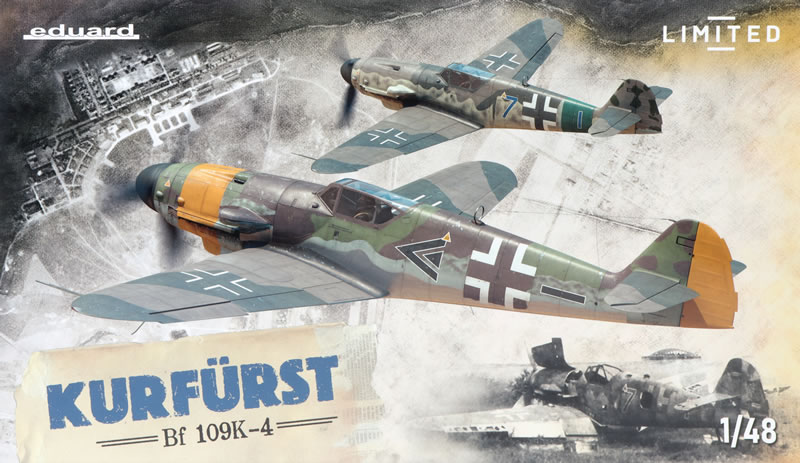
Eduard Limited Edition, 1/48 scale
S
u m m a r y
|
| Catalogue Number: |
Eduard Kit No. 11177 - Kurfürst Bf 109 K-4 Limited Edition |
| Scale: |
1:48 |
| Contents and Media: |
132 parts in grey plastic (four marked not for use); eleven parts in clear; colour photo-etched fret; self-adhesive die-cut canopy masks; decals for nine marking options; 24 page instruction book. |
| Price: |
USD$54.95 plus shipping online from Eduard
GBP£26.28 (£21.90 Export Price) plus shipping available from Hannants |
| Review Type: |
FirstLook |
| Advantages: |
Captures unique attributes of the Bf 109 K-4; all-new sprues with many revisions to parts and assembly processes; high level of detail; crisp and restrained surface
textures including panels and rivet lines where
appropriate; includes colour photo-etched parts; high quality
moulding; narrow sprue attachments; nine colourful marking options. |
| Disadvantages: |
Sink marks on top of flame dampers. |
| Recommendation: |
There is no doubting Eduard’s ongoing commitment to the pursuit of excellence. This kit represents the launch of their third generation of 1:48 scale Bf 109 G/K kits, with incremental improvements along the way. I don’t think anyone could claim that we don’t need a new Bf 109 K-4 after more than two decades since the most recent release, and Eduard has done a very nice job with this all-new offering. Eduard's Kurfürst is now clearly the best Bf 109 K-4 in any scale. This one won’t be staying in the box for long! |
Reviewed by Brett Green

The Messerschmitt Bf 109 K-4 was the last design of this famous marque to see service with the Luftwaffe. Unlike the Bf 109 G variants before it, the Bf 109 K was not recycled from old airframes, but was purpose built as a high performance fighter.
This ultimate 109 entered squadron service in October 1944. Only around 700 Bf 109 K-4s were manufactured, the last leaving the production lines in April 1945.
The Bf 109 K-4 in 1:48 scale
The Messerschmitt Bf 109 K-4 has been kitted in 1:48 scale on a number of occasions, most recently in the 1990s.
The best of the bunch was Hasegawa, whose Bf 109 K-4 was released in 1999. This remains a decent kit today. There are no fuselage inserts and there is no need to fill or rescribe lines on the fuselage. Some of the detail is a bit basic though, including the cockpit and the outer undercarriage doors.
Sometime before Hasegawa released their Kurfürst, Revell Germany added a small extra sprue to their well-established Bf 109 G-10. However, this still left a fair bit of work for the modeller to achieve a truly representative Bf 109 K-4. The Revell kit suffered from its age, its lack of detail, thick clear parts and its Bf 109 G origins.
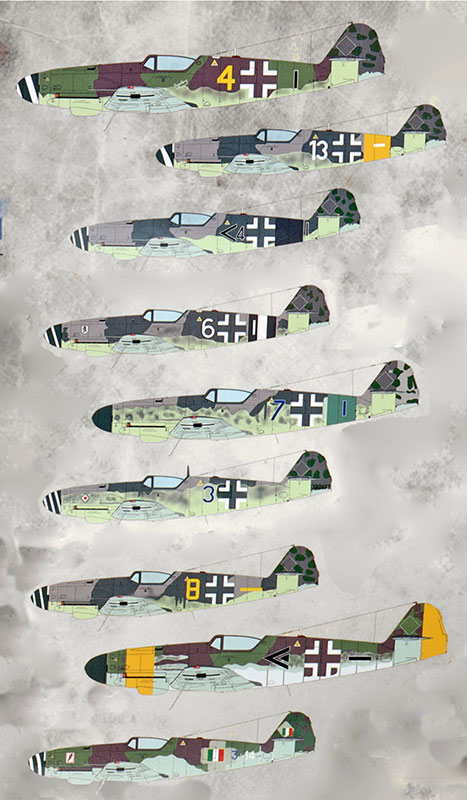
Hobbycraft and Fujimi both released K-4 kits in the 1990s too. The Hobbycraft kit was a disappointment in terms of fit, detail and accuracy; while the Fujimi kit was expensive for its day and (in my opinion) over-engineered. The nose always looked a bit weird and bulbous to me too.
So, more than two decades after the most recent Bf 109 K-4 release, what has Eduard come up with?
Considering Eduard’s current line of 1:48 scale Messerschmitt Bf 109 G kits, you might be forgiven for thinking that they would simply modify some of the existing parts to create a Bf 109 K-4.
But you’d be wrong.
This is a completely new kit. Every sprue has been revised.
Some of the differences are obvious and others are subtle, but it is clear that Eduard has taken no short cuts to deliver this ultimate WWII Bf 109.
Each sprue has a suffix of “K” to differentiate this unique variant.
Eduard’s all-new Messerschmitt Bf 109 K-4 comprises 132 parts in grey plastic (four marked not for use), eleven parts in clear, a colour photo-etched fret, self-adhesive die-cut canopy masks, decals for nine marking options and a 24 page instruction book.
I have spent some time examining and building this new Bf 109 K-4 and also comparing it with one of Eduard’s recent Gustav kits, specifically Item No. 84182 - Bf 109 G-10 WNF/Diana.
These are well-detailed kits with excellent fit and useful options. I have built a number of Eduard’s Bf 109 G kits and they have all been enjoyable experiences.
And yet, Eduard has managed to wring out a number of subtle improvements for their new Bf 109 K-4 sprues.
Here is what I found:
First and foremost, the Bf 109 K’s unique characteristics are all present. These include a revised cockpit with new sidewalls, floor, instrument panel etc., correctly shaped port fuselage radio hatch relocated higher and forward by one panel, retractable outboard main landing gear covers, retractable tail wheel and clamshell doors.

In the cockpit, the fuse/switch panel on the starboard sidewall may be enhanced with photo-etch or decals.
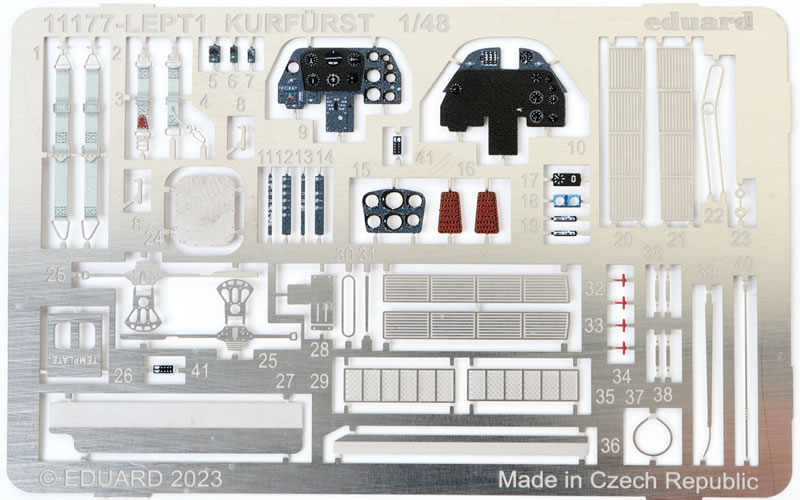
A choice of an overlay decal or a photo-etched sandwich is also offered for the instrument panel.
The curled oxygen hose is a separate part.
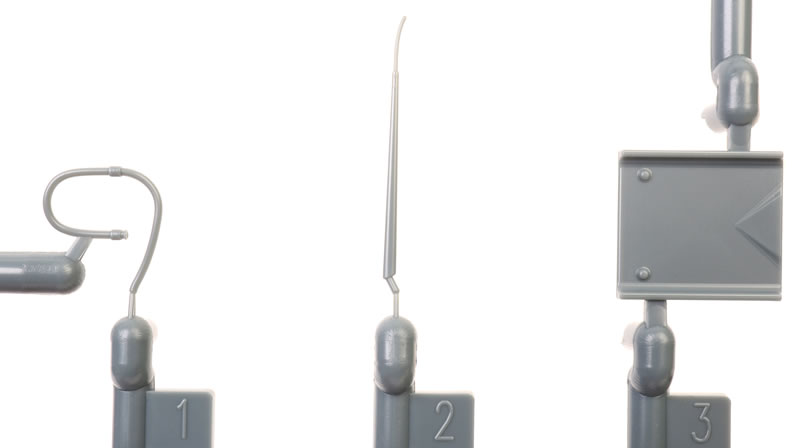
Please note that the Bf 109 K-4 cockpit did not have the fuel line and clear inspection tube.
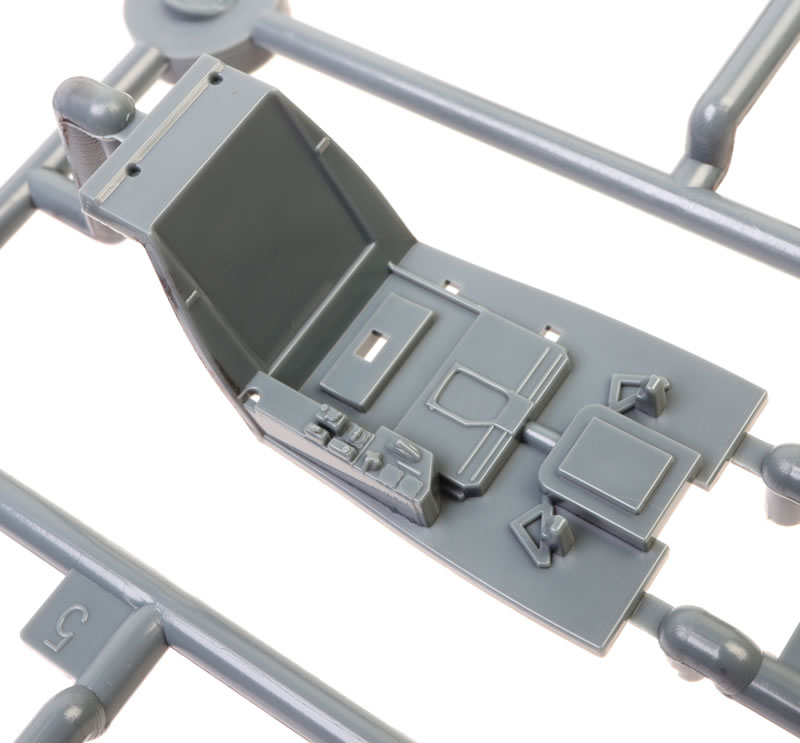
This kit features improved surface detail at the lower nose.
The shape of the upper cowl had been improved too. The cowl hinge line is also now moulded into the upper engine cowl.
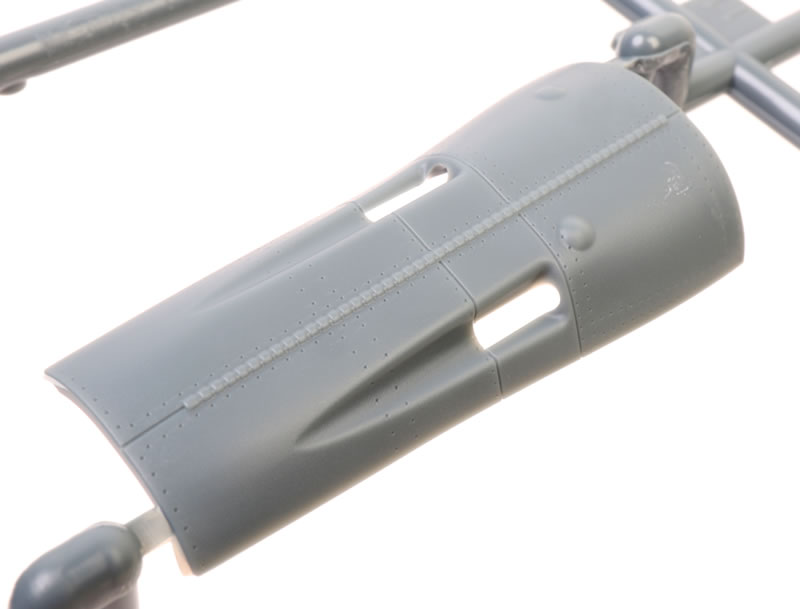
The cowl intake scoops are all hollow.
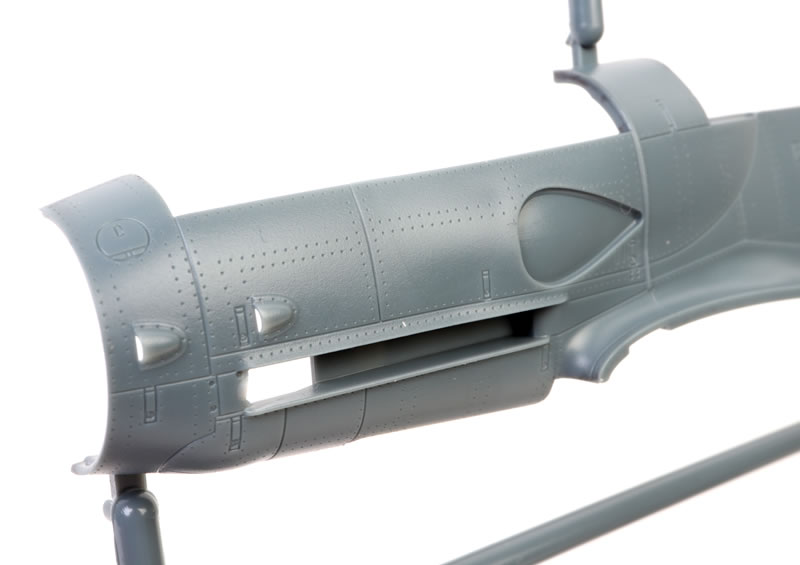
The supercharger intake shape has been slightly revised in front of the elbow.
Exhaust stacks are less “toothy” - not as tall. However, the ends of stacks are solid (not hollowed out).
Optional flame dampers are offered - exhausts and dampers moulded as one or separate photo-etched dampers.
The kit instruction show the exhausts being fitted from the inside of the fuselage. However, it should be possible to fit the exhausts from the outside later in the assembly sequence if you prefer.
There are visible sink marks on top of starboard exhaust flame damper.
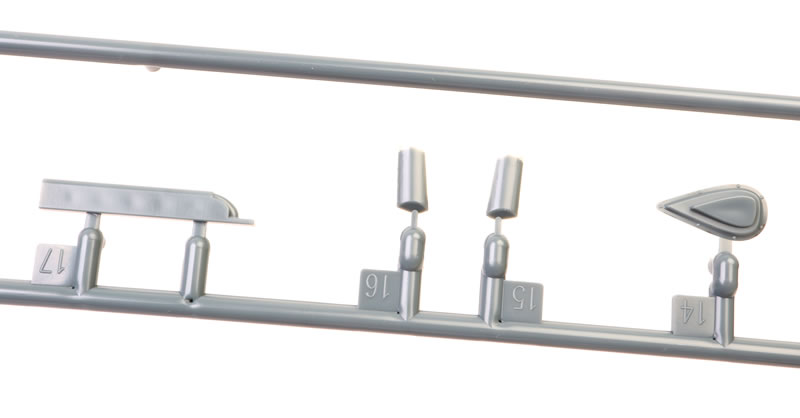
Cowl muzzles are fitted from the front and may be glued in place late in construction or after painting.
Cowl guns are not hollow at the muzzle.
There are subtle differences in the mid lower wing panel between this K-4 and Eduard’s earlier Bf 109 G kits.

The join between wing and fuselage at the lower wing has been improved. The join is now straight and located on a natural panel line - no more filling and sanding that awkward crooked join.

Fabric texture on control surfaces is finer and includes pinking (that tiny zig-zag edge) on the strips - very impressive.
Two styles of elevator are offered. One has a trim tab as well as a large Flettner tab.
Alternative rudders are included. The difference is that one of them is faired in to the tail light. It took me a while to figure that one out!
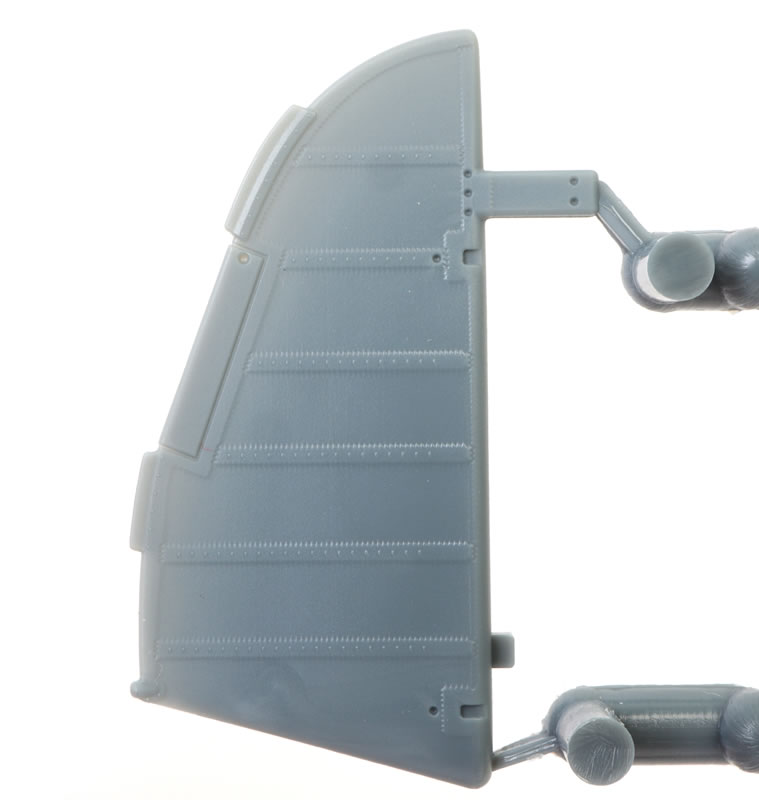
Eduard has moulded two alternative aerial attachments on the top of the port side fin.
Main undercarriage legs are around 1mm shorter than the previous kits.
Parts breakdown for the main wheel wells is new with improved detail and more positive locating pins/holes.
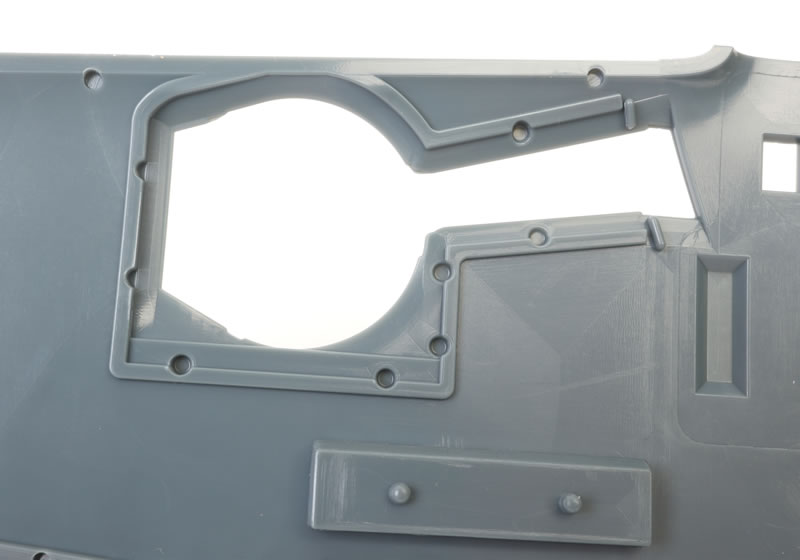
The tail wheel strut may be fitted late in assembly, any time after fuselage halves are joined. Separate tail wheel well doors and a tail wheel retraction strut are also supplied, including the option of closed tail wheel doors and the tail wheel strut locked in place.

Clear parts are now supplied for wingtip navigation lights.
Spares are provided for the DF loop, rudder pedals, mass balances and antenna mast.
The pitot tube is moulded to the port side wing leading edge. Mercifully, there is a separate spare pitot tube on the sprues.
Some have mentioned the recessed line of fasteners (represented by simple holes) along the top of the wing root fairing. The same line of fasteners is also present on Eduard’s earlier Bf 109 Gs. This line was seen on some Bf 109s. Check your references if you want to identify whether your subject had this line or not.
I like the shape of the new drop tanks, especially at the rear.
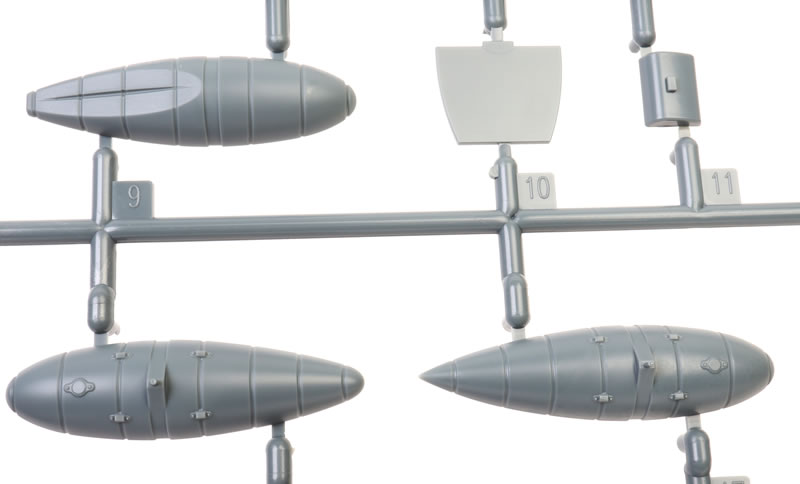
The clear sprue provides the windscreen, canopy, Galland Panzer armoured glass, gunsight, isolation panel for the under-wing Morane mast and wingtip navigation lights.
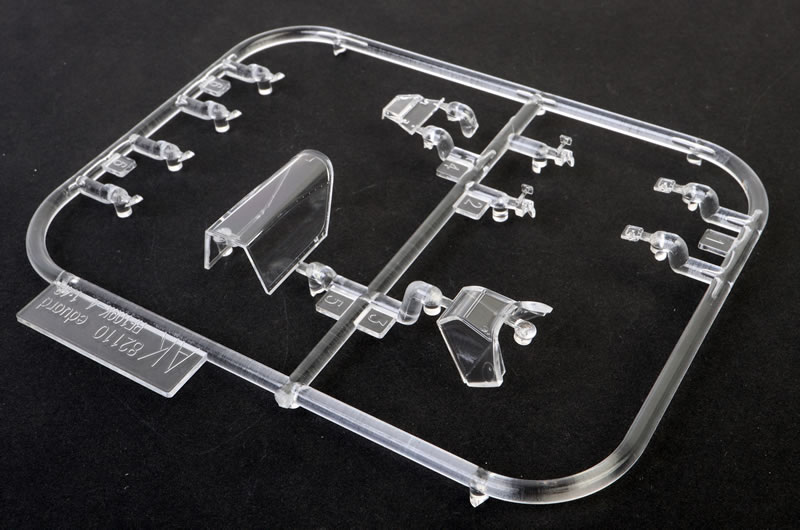
Eduard has very thoughtfully supplied spare parts for the wingtip lights, gunsight and the square Morane mast base.
Markings
The kit’s camouflage schemes are the result of co-operation between Eduard and Mr. Tomas Poruba from JaPo Publishing.
The proposed colours and markings are all interesting and are consistent with the latest Luftwaffe colour research.
The specific subjects are:
-
Fw. Hans Strebel, 11./JG 3, Franzfelde airfield near Pasewalk, Germany, March 1945
-
9./JG 4, Flensburg airfield, Germany, May 1945
-
6./KG(J) 6, Klecany airfield, Protectorate of Bohemia and Moravia, May 1945
-
5./JG 11, Strausberg Airfield, Germany, early 1945
-
12./JG 27, Prague-Kbely airfield, Protectorate of Bohemia and Moravia, May 1945
-
Maj. Wilhelm Batz, CO of II./JG 52, Zeltweg, Austria, May 1945
-
Lt. Horst Potreck, Stab III./JG 53, Kreuzstrasse near Holzkirchen, Germany, April 1945
-
WNr. 330177, Uffz. Alfred Nitsch, 12./JG 77, Neuruppin, Germany, November 1944
-
WNr. 333878, S. Ten Umberto Gallori, 3a Squadriglia, Io Gruppo Caccia, Lonate Pozzolo, Italy, March 1945
Decals are printed by Eduard.
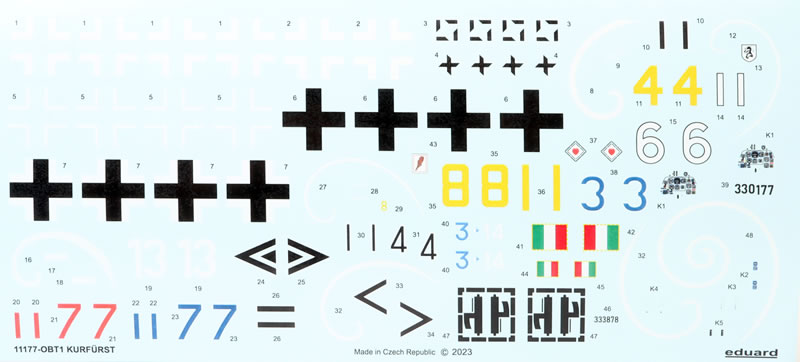
A separate stencil decal sheet is included.

This is new too.
I have already finished basic construction. The model was built straight from the box.
Fit was excellent throughout and the model came together quickly.
No filler has been used at this stage.

I followed the instructions with the following exceptions:
I filled and sanded the sink marks on top of the moulded-in exhaust flame dampers (Parts BK15 and) BK17, but the filled area is hidden by the thickness of the cowl.
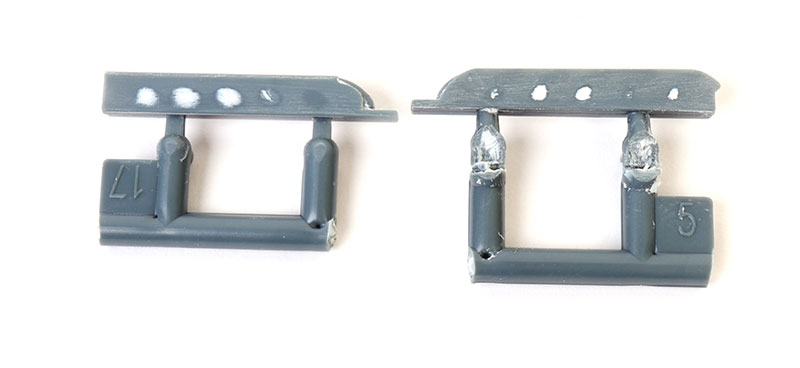
When the model is built, you can't see the sink marks at all.
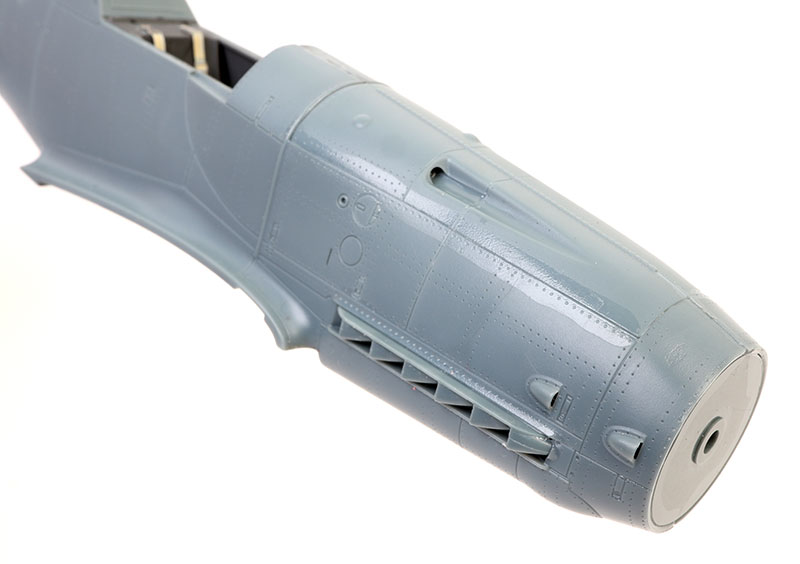
The kit instructions show the exhausts being fitted from the inside of the fuselage, which I did. However, it should be possible to fit the exhausts from the outside later in the assembly sequence if you prefer.
The upper cowl is moulded with four long locating pegs. I found that the fit of the upper cowl was better when I cut off the port side pegs. Interestingly, the pegs are not shown in the instruction illustrations. I taped the cowl tightly as the glue set.
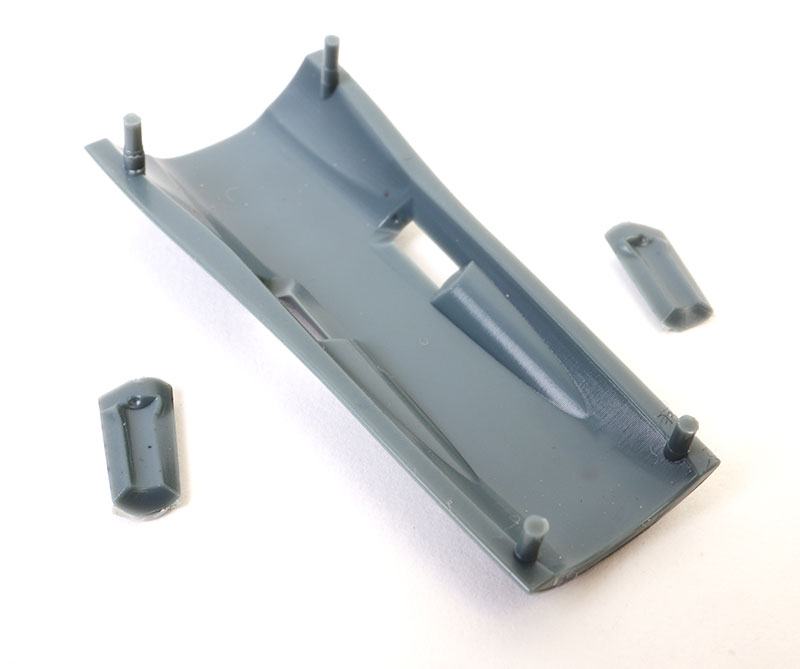
The bulkhead behind the pilot's head (Part DK30) is moulded with a raised strake on each side. These are spring-loaded cylinders that would jettison the aft part of the 3-piece canopy when a handle was pulled. These should be cut off / sanded off, although there are photographs of aircraft with the Erla Haube canopy with these cylinders still in place. Check your references. Also, the hatch should be a shorter, simpler trapezoid shape.
The instructions suggest that the horizontal stabilisers should be fitted before the wing is installed. Personally, I find it easier to align the horizontal stabilisers with the wing after the wing has been fitted and checked for correct dihedral.
As is my usual practice these days, I glued the upper wing halves to the fuselage wing root before adding the full-span lower wing. This worked perfectly and delivered a totally gap-free wing root join.
The new five-part main wheel wells are noteworthy. Detail is very impressive.
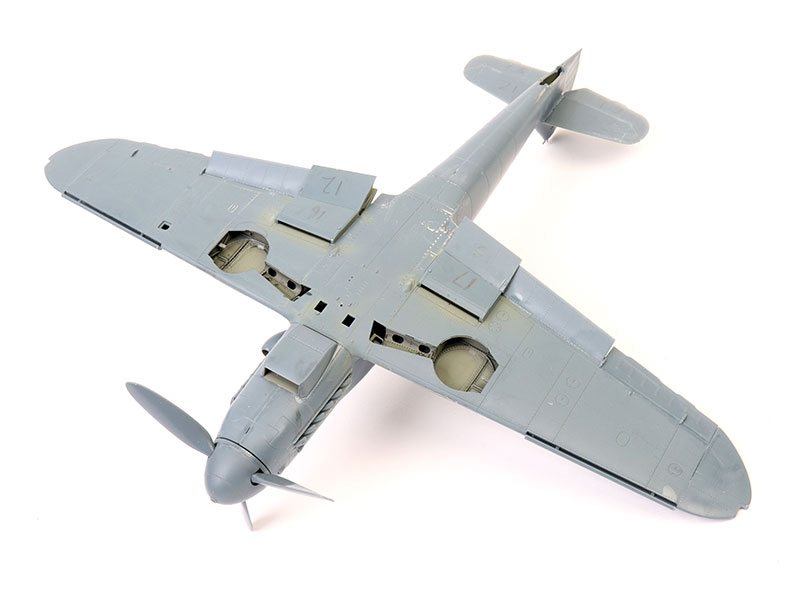
My pitot tube (moulded to the leading edge of the port wing) broke off as I was assemblling the wing. This was not unexpected.It can be replaced at the end of the painting stage with the separate pitot tube on the kit sprues.
I did not use the photo-etched radiator and oil cooler intake faces.
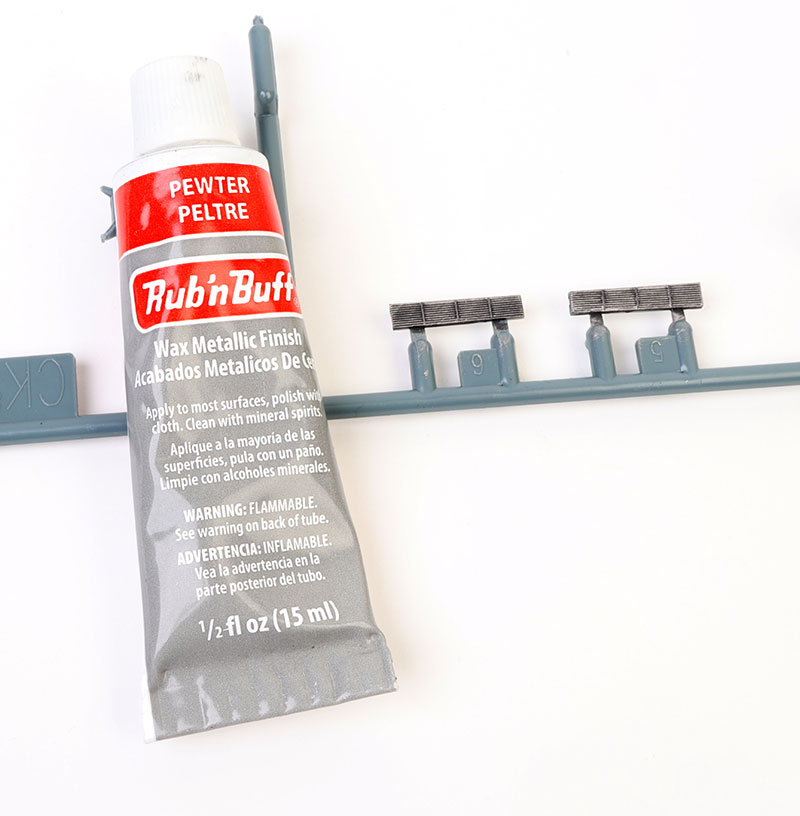
Instead, I painted the plastic faces black and wiped the raised surfaces with Rub ’n’ Buff Pewter on a small flannel cloth..
There is no doubting Eduard’s ongoing commitment to the pursuit of excellence.
This kit represents the launch of their third generation of 1:48 scale Bf 109 G/K kits, with incremental improvements along the way.
I don’t think anyone could claim that we don’t need a new Bf 109 K-4 after more than two decades since the most recent release, and Eduard has done a very nice job with this all-new offering. Eduard's Kurfürst is now clearly the best Bf 109 K-4 in any scale.
This one won’t be staying in the box for long!
Purchased by reviewer
Review Text Copyright © 2023 by
Brett Green
Page Created 9 September, 2023
Last updated 15 September, 2023
Back to HyperScale Main Page
Back to Reviews Page
|
